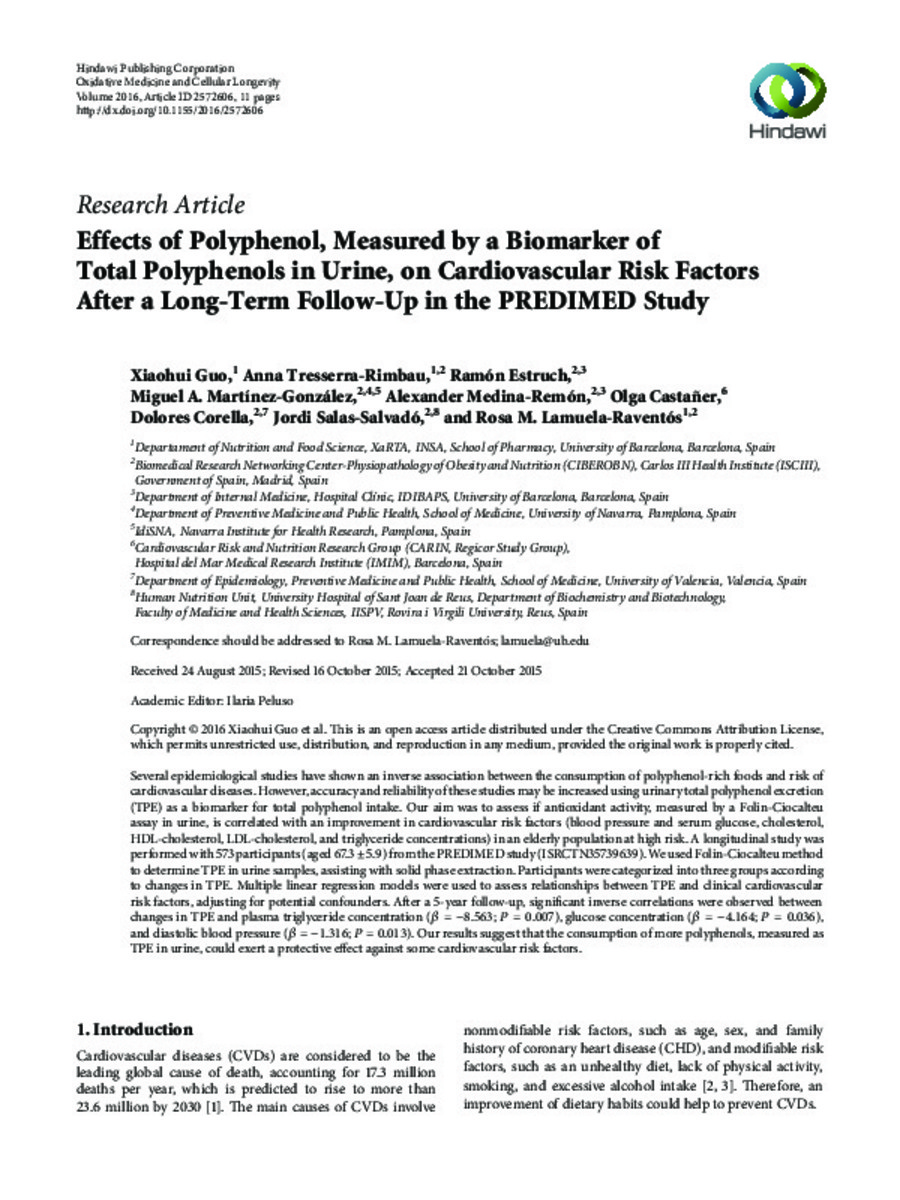Effects of Polyphenol, measured by a biomarker of total polyphenols in urine, on cardiovascular risk factors After a long-term follow-up in the PREDIMED study
Palabras clave :
Materias Investigacion::Ciencias de la Salud::Medicina preventiva
PREDIMED study
Long-term follow-up
Cardiovascular risk factors
Polyphenols in urine
Biomarker
Effects of Polyphenol
Fecha de publicación :
2016
Editorial :
Hindawi Publishing Corporation
Proyecto:
Morella Nuts SA (Reus, Spain)
California Walnut Commission (Sacramento, CA)
China Scholarship Council (CSC).
The Generalitat de Catalunya (GC) 2014 SGR 773
This study was supported by CICYT (AGL2013-49083- C3-1-R) from the Spanish Ministry of Economy and Competitiveness (MEC)
Instituto de Salud Carlos III, ISCIII (CIBEROBN), Spain.
The Fundacion Patrimonio Comunal Olivarero (Madrid, Spain)
Borges SA (Reus, Spain)
Nota editorial :
Copyright © 2016 Xiaohui Guo et al.This is an open access article distributed under the Creative Commons Attribution License,
which permits unrestricted use, distribution, and reproduction in any medium, provided the original work is properly cited.
Cita:
Xiaohui G, Tresserra-Rimbau A, Estruch R, Martinez-Gonzalez MA, Medina-Remon A, Castañer O, et al. Effects of Polyphenol, measured by a biomarker of total polyphenols in urine, on cardiovascular risk factors After a long-term follow-up in the PREDIMED study. Oxid Med Cell Longev 2016;2572606.
Aparece en las colecciones:
Los ítems de Dadun están protegidos por copyright, con todos los derechos reservados, a menos que se indique lo contrario.








